Osgood-Schlatter Disease: Causes, Symptoms and Treatments

Osgood-Schlatter Disease: Causes, Symptoms, and Treatments is a condition that affects a large number of people who are active, especially teenagers, but is sometimes overlooked. Consider this scenario: your gifted child is thriving in their preferred sport, and suddenly, they develop knee pain. Osgood-Schlatter disease is a possible diagnosis that could throw a wrench in their otherwise bright sporting career. This post will explore The causes, symptoms, and therapies of Osgood-Schlatter Disease to clarify this sometimes misdiagnosed illness and offer insightful information to parents and athletes alike.
Contents
- 1 Understanding Osgood-Schlatter Disease
- 2 Factors contributing to the development of OSD
- 3 How doctors diagnose OSD
- 4 Managing and treating Osgood-Schlatter Disease
- 5 Strategies for preventing OSD
- 6 FAQ’s
- 6.1 What causes Osgood Schlatter to flare up?
- 6.2 How long does it take to recover from Osgood-Schlatter disease?
- 6.3 Is Osgood Schlatters a disability?
- 6.4 Can Osgood-Schlatter disease still hurt adults?
- 6.5 Can Osgood-Schlatter be seen on an x-ray?
- 6.6 What is the best treatment for Osgood-Schlatter disease?
- 6.7 Does Osgood-Schlatter’s disease require surgery?
- 6.8 Can Osgood-Schlatter disease be self-healing?
- 6.9 What causes Osgood Schlatter to flare up?
- 6.10 How do you fix Osgood Schlatter?
- 6.11 What are the three main risk factors for Osgood Schlatter?
- 6.12 How long does it take to recover from Osgood-Schlatter disease?
- 6.13 What is the best way to treat Osgood Schlatters?
- 6.14 What is the procedure for Osgood-Schlatter disease?
- 6.15 What is the surgical treatment for unresolved Osgood-Schlatter disease?
- 6.16 Is Osgood Schlatter fixable?
- 6.17 What causes Osgood Schlatter to flare up?
- 6.18 How do you treat Osgood-Schlatter disease?
- 6.19 How long does it take for Osgood Schlatters to heal?
- 6.20 Is Osgood Schlatters a disability?
- 6.21 What exercises are good for Osgood Schlatter?
- 6.22 What is the best treatment for Osgood-Schlatter disease?
- 6.23 How does stretching help Osgood Schlatter?
- 6.24 Is ice or heat better for Osgood Schlatters?
- 6.25 How is Osgood-Schlatter disease treated in children?
- 6.26 Do kids grow out of Osgood Schlatter?
- 6.27 How do you exercise Osgood Schlatters in children?
- 6.28 How long does it take for Osgood Schlatters to heal?
- 7 Conclusion: Osgood-Schlatter Disease
Understanding Osgood-Schlatter Disease
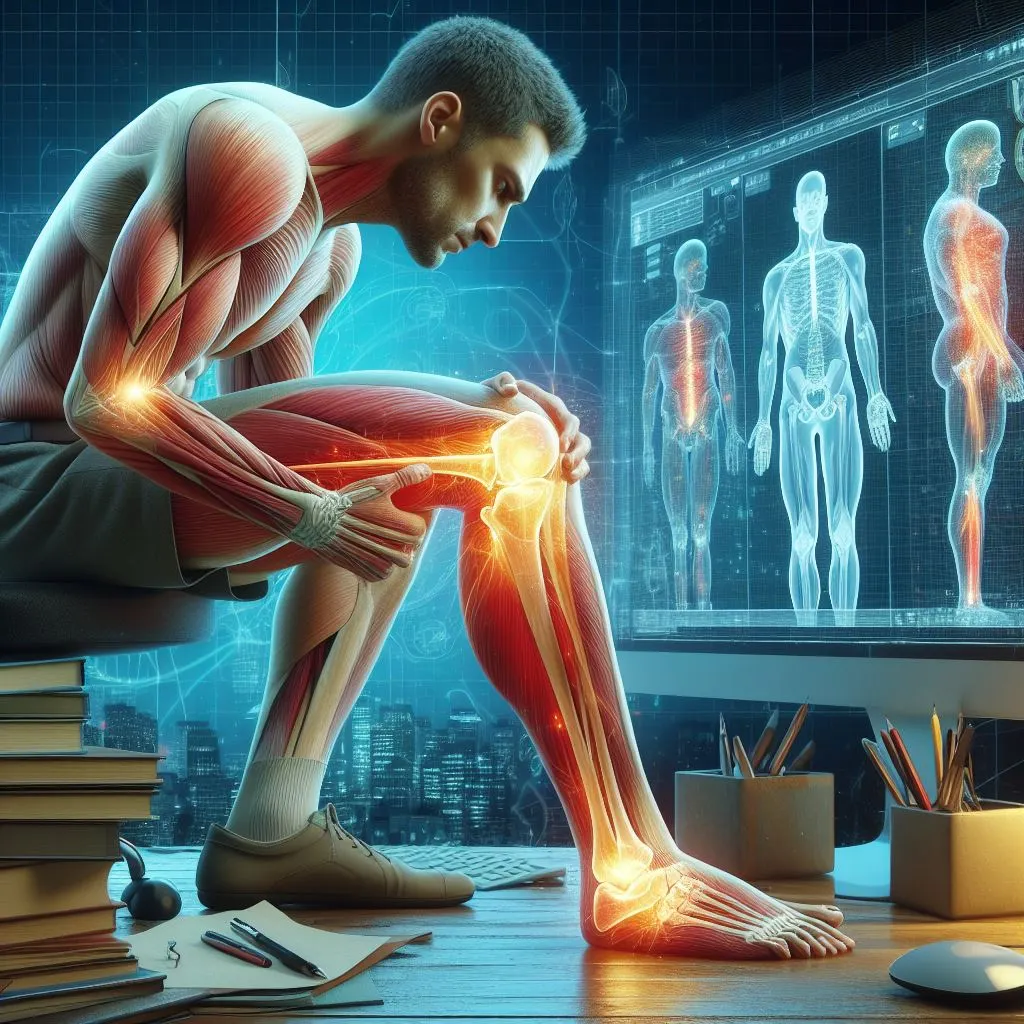
Understanding Osgood-Schlatter’s disease goes beyond recognizing its physical symptoms; it also involves acknowledging its impact on mental health and emotional well-being. Adolescents with this condition often face challenges such as frustration, decreased confidence, and limitations in their physical activities. Parents, coaches, and healthcare providers need to provide medical and emotional support to help young individuals cope with these challenges effectively. By addressing The physical and psychological aspects of Osgood-Schlatter disease, we can better equip adolescents to manage and overcome this condition while maintaining their overall well-being.
Factors contributing to the development of OSD
Osgood-Schlatter Disease (OSD) is believed to be primarily caused by overuse of the quadriceps muscle during activities like running, jumping, and other sports-related movements. This puts excess strain on the patellar tendon and causes repetitive stress to the growing bone, leading to inflammation and pain characteristic of OSD. Furthermore, rapid growth spurts during adolescence can exacerbate the condition as bones and muscles sometimes grow at different rates, increasing tension in the already vulnerable areas around the knee.
Another significant factor contributing to OSD is genetic predisposition. Some individuals may have an inherited tendency towards developing OSD due to their bone structure or how their tendons and muscles align around their knees. This genetic predisposition can make them more susceptible to experiencing OSD symptoms when engaging in physical activity, highlighting the intricate interplay between genetics and environmental factors in the development of this condition.
Identifying the signs of Osgood-Schlatter Disease
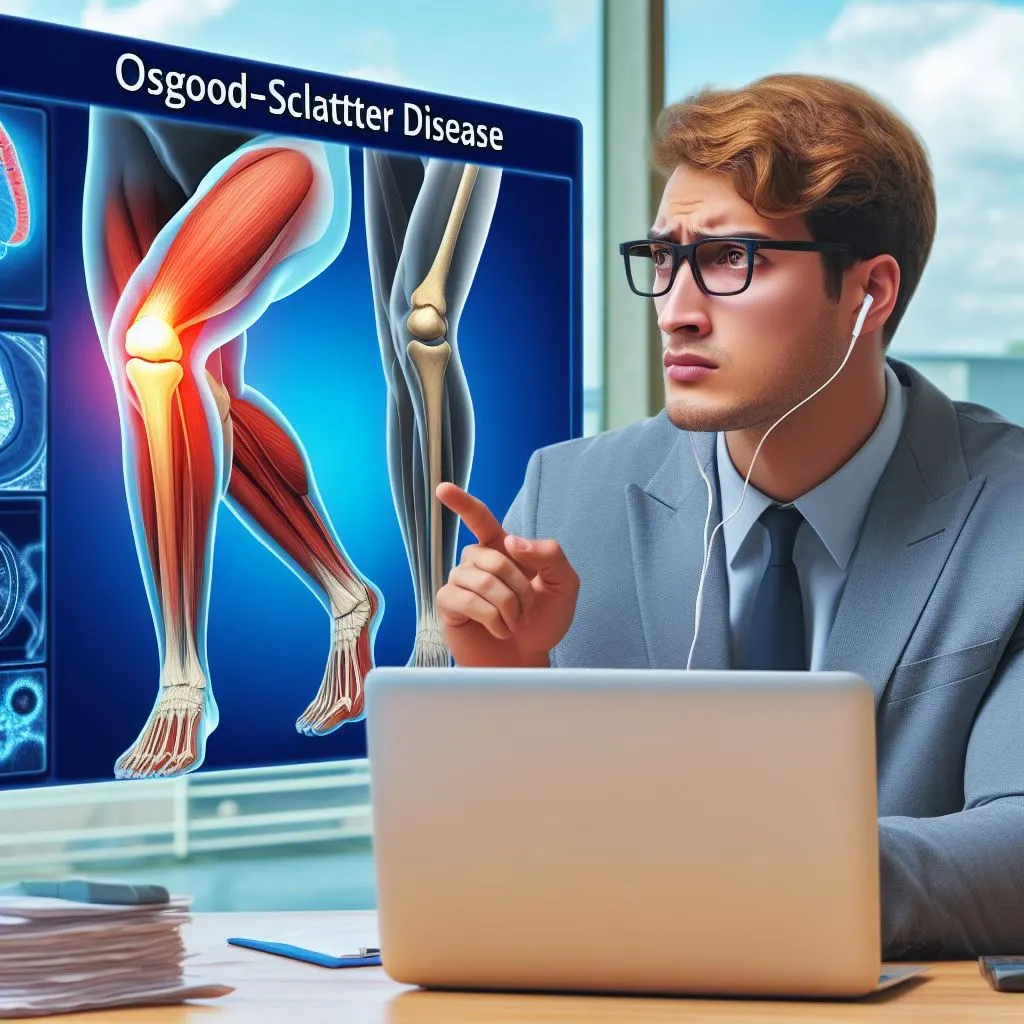
It’s important to note that while Osgood-Schlatter disease is more common in physically active adolescents, it can also affect less active individuals. Additionally, some young athletes may notice a bony bump or prominence at the site of pain, which indicates inflammation and stress on the growth plate. Observing these signs early on allows timely intervention and management to prevent long-term complications. By being aware of these symptoms, caregivers and individuals can take proactive steps to address the condition effectively.
How doctors diagnose OSD
Diagnosing Osgood-Schlatter disease (OSD) can be a complex process that requires careful consideration of the patient’s symptoms and medical history. In addition to a thorough physical examination, doctors often utilize imaging tests such as X-rays to assess the affected knee joint. These images can reveal any bone structure or growth plate abnormalities, providing essential clues for an accurate diagnosis. Furthermore, physicians may also perform various range of motion tests and palpations to evaluate the level of pain and inflammation present in the knee area.
One key aspect of diagnosing OSD is distinguishing it from other potential causes of knee pain, such as patellar tendonitis or patellar fractures. Doctors rely on their expertise and understanding of musculoskeletal conditions to differentiate OSD from similar ailments, ensuring patients receive the most appropriate treatment regimen. Additionally, considering factors like age, level of physical activity, and overall health status is crucial in formulating a comprehensive diagnostic approach for OSD. By combining clinical evaluation with advanced imaging techniques and comprehensive knowledge of orthopedic conditions, doctors can ensure an accurate diagnosis for patients presenting with symptoms of Osgood-Schlatter disease.
Managing and treating Osgood-Schlatter Disease

In more severe cases where conservative methods are ineffective, a doctor might recommend a knee brace to provide additional support during physical activities. In rare instances where Osgood-Schlatter disease leads to persistent pain or limitation of movement, surgical intervention is a last resort. Individuals with this condition need to seek guidance from healthcare professionals who can tailor treatments based on their specific needs and monitor their progress effectively.
Strategies for preventing OSD
When it comes to preventing Osgood-Schlatter disease (OSD), several strategies can help reduce the risk of developing this condition. One critical approach is prioritizing proper warm-up and stretching exercises before engaging in physical activities or sports. This helps to prepare the muscles, tendons, and ligaments for the demands of physical exertion, reducing the likelihood of strain on the knee area.
By adopting these preventative strategies, individuals can take proactive steps to safeguard their knee health and minimize their chances of developing Osgood-Schlatter disease. It’s important to remember that while OSD primarily affects adolescents during periods of rapid growth, implementing these prevention measures early on can lay a strong foundation for lifelong musculoskeletal wellness.
FAQ’s
What causes Osgood Schlatter to flare up?
Osgood-Schlatter disease, a condition usually seen in adolescents who are very active in sports, tends to flare up due to repetitive stress and strain on the patellar tendon. This can be exacerbated by activities that involve jumping, running, or sudden changes in direction. The growth spurt during adolescence also plays a significant role, as it puts additional stress on the bones and muscles around the knee.
How long does it take to recover from Osgood-Schlatter disease?
Recovery from Osgood-Schlatter disease varies from person to person; minor cases usually go away in a few weeks or months, but severe cases can take longer. Recovery time is affected by age, degree of exercise, and severity of the ailment. Emotional health is essential during rehabilitation, especially for young athletes or active people. Low-impact workouts like yoga or swimming help you overcome obstacles and become stronger.
Is Osgood Schlatters a disability?
Osgood-Schlatter disease is a condition that primarily affects children and adolescents who are experiencing growth spurts. It is characterized by inflammation of the patellar ligament at the tibial tuberosity, causing pain and swelling below the kneecap. While Osgood-Schlatter can be debilitating and limit physical activity, it is not typically considered a disability. Instead, it’s viewed as a manageable orthopedic condition that often resolves once the growth spurt ends.
Can Osgood-Schlatter disease still hurt adults?
As commonly believed, Osgood-Schlatter disease is not limited to adolescents and can continue to cause pain or discomfort in adults. While the condition typically manifests during rapid growth and physical activity in adolescence, the residual effects can linger into adulthood for some individuals. As the bones mature and develop, the unresolved stress on the patellar tendon attachment site can lead to persistent pain and swelling in adult patients with a history of Osgood-Schlatter disease.
Can Osgood-Schlatter be seen on an x-ray?
Although Osgood-Schlatter disease is typically diagnosed through physical examination and medical history, it can, be visually observed on an X-ray. This condition manifests as inflammation of the patellar ligament at the point where it inserts into the tibial tuberosity, resulting in a bony prominence. On an x-ray, this bony prominence appears as irregularity or fragmentation at the tibial tuberosity, often accompanied by soft tissue swelling. It’s important to note that while X-rays can confirm the presence of Osgood-Schlatter disease, they are not always necessary for diagnosis and may not provide definitive treatment guidance.
Best radiologists for x-rays and ultrasounds near you
What is the best treatment for Osgood-Schlatter disease?
The best treatment for Osgood-Schlatter disease typically involves a combination of rest, icing, and physical therapy. Resting the affected knee can help alleviate pain and reduce inflammation, allowing the condition to heal. Icing the area can also provide relief by reducing swelling and discomfort. Additionally, physical therapy exercises are crucial for strengthening the quadriceps muscles and improving flexibility, which can help prevent the recurrence of symptoms.
Does Osgood-Schlatter’s disease require surgery?
Surgery is sometimes a source of concern for those with Osgood-Schlatter disease, a disorder that is widespread in young athletes and teenagers. Nonetheless, conservative measures like rest, ice therapy, physical therapy, and activity adjustment help treat most instances without the need for surgery. Without requiring surgery, non-invasive therapies can aid in symptom management and healing promotion. The best course of action must be determined by consulting a medical practitioner; tailored treatment strategies can help control the illness without surgery.
Can Osgood-Schlatter disease be self-healing?
Osgood-Schlatter disease, a common condition among active adolescents, is characterized by pain and swelling just below the knee. While it can be debilitating for young athletes, there is some hope that the condition might resolve on its own over time. Studies have suggested that most cases of Osgood-Schlatter disease improve without specific treatment as the child grows into adulthood. This self-healing potential has been attributed to the natural development and maturation of bones and muscles as teenagers reach skeletal maturity. However, it’s important to note that while many individuals may experience relief from symptoms with age, some may continue to have lingering discomfort into adulthood.
What causes Osgood Schlatter to flare up?
Osgood-Schlatter disease, a common cause of knee pain in adolescents, is primarily caused by repetitive stress on the growth plate of the shinbone during periods of rapid growth. High-impact activities such as running, jumping, or sports that involve frequent changes in direction can exacerbate this condition, leading to inflammation and pain. Additionally, tightness or weakness in the quadriceps and hamstrings can contribute to increased pressure on the knee joint, further aggravating Osgood-Schlatter symptoms.
How do you fix Osgood Schlatter?
Adolescents who suffer from Osgood-Schlatter disease, an overuse condition, can benefit from targeted stretching, activity modification, and working with a physical therapist or sports medicine specialist. A good rehabilitation process can result from proactively controlling symptoms and promoting recovery, even though it will require persistence and patience.
What are the three main risk factors for Osgood Schlatter?
Osgood-Schlatter disease, a condition frequently experienced by adolescents during growth spurts, is linked to several risk factors. The first significant risk factor is intense physical activity, such as sports, requiring frequent jumping and running. This strain on the knee can exacerbate the pain and inflammation associated with Osgood-Schlatter. Another significant risk factor is rapid growth during puberty, which increases the tension on the patellar tendon attachment point at the tibial tuberosity. Lastly, genetic predisposition plays a crucial role in the development of Osgood-Schlatter disease, as individuals with a family history of the condition are more likely to experience it themselves.
How long does it take to recover from Osgood-Schlatter disease?
Recovering from Osgood-Schlatter disease can vary widely among individuals, but the consensus is that it takes time and patience. In most cases, the condition resolves independently once the growth plates close, usually by the late teens or early twenties. However, managing symptoms and allowing enough rest for the affected knee is essential during this recovery period. This may mean avoiding high-impact activities like running or jumping until the pain subsides.
What is the best way to treat Osgood Schlatters?
Treatment options for Osgood-Schlatter disease include physical therapy, activity moderation, and rest. Recuperation time is essential, and excessive activity should be controlled. Using cold and anti-inflammatory drugs, physical therapy reduces inflammation while strengthening muscles and increasing flexibility. Surgical intervention is frequently regarded as a last resort due to the dangers and recuperation durations, although it may be necessary in extreme circumstances.
What is the procedure for Osgood-Schlatter disease?
Osgood-Schlatter disease, a common cause of knee pain in growing adolescents, requires a comprehensive management plan to alleviate symptoms and promote healing. The procedure for Osgood-Schlatter disease typically begins with rest and activity modification to reduce stress on the affected knee. This may involve avoiding activities that exacerbate the pain, such as running or jumping and incorporating low-impact exercises like swimming or cycling.
What is the surgical treatment for unresolved Osgood-Schlatter disease?
Surgical procedures such as osteotomies or debridement can be used to treat Osgood-Schlatter disease that has not resolved. Debridement eliminates broken or damaged bone pieces, whereas osteotomy removes the bony prominence on the tibial tubercle. These procedures reduce pain and increase function, but problems and hazards can occur. It is essential to consult a healthcare provider.
Is Osgood Schlatter fixable?
Osgood-Schlatter disease is fixable with proper treatment and care. While it can be frustrating and uncomfortable, especially for young athletes, the good news is that it usually resolves on its own once the growth plate has finished growing. However, some steps can be taken to alleviate pain and discomfort. Physical therapy, rest, ice packs, and over-the-counter pain medications can all help manage symptoms while allowing the body to heal naturally. In some cases, more severe or persistent cases might require professional medical intervention such as braces or surgery, but these are relatively rare.
What causes Osgood Schlatter to flare up?
Teenagers with Osgood-Schlatter disease often have knee problems that are brought on by physical activity; fast growth spurts throughout puberty, and poor knee biomechanics. The patellar tendon may become more tense due to these variables’ worsening inflammation and irritation surrounding the growth plate. Overuse, abnormal development patterns, and biomechanical problems should be the main focus of treatment to implement focused therapies such as strengthening exercises and activity level modifications.
How do you treat Osgood-Schlatter disease?
Osgood-Schlatter disease, a common condition in adolescents, can be managed effectively through various treatment methods. The first step is typically to reduce physical activity and sports that strain the knees excessively. This can alleviate symptoms and prevent further aggravation of the condition. Additionally, incorporating stretching and strengthening exercises for the quadriceps and hamstrings can help improve flexibility and reduce tension around the knee joint.
How long does it take for Osgood Schlatters to heal?
Osgood-Schlatter disease is a frequent ailment that causes swelling and pain below the knee in active adolescents. Usually, it goes away in a year or two. Stretching, strengthening, and limiting physical activity are all part of a comprehensive approach. Patience and seeking medical guidance are essential for a successful recovery.
Is Osgood Schlatters a disability?
Osgood-Schlatter disease is often misunderstood as a disability, but in reality, it is a common condition that affects the knees of growing adolescents. While it can cause pain and discomfort, particularly during physical activities, it does not typically result in long-term disability. Osgood-Schlatter is characterized by inflammation of the area just below the knee where the patellar tendon attaches to the shinbone. It is often brought on by overuse or repetitive strain on the knee during periods of rapid growth.
What exercises are good for Osgood Schlatter?
When it comes to managing Osgood Schlatter, incorporating specific exercises can be beneficial in alleviating symptoms and promoting healing. Low-impact activities such as swimming or cycling can help strengthen the quadriceps without putting excessive strain on the knee. Additionally, focusing on hamstring and calf stretches can improve flexibility and reduce tension around the knee joint, which helps minimize discomfort associated with Osgood Schlatter.
What is the best treatment for Osgood-Schlatter disease?
There is no single best treatment for Osgood-Schlatter disease, as the condition requires a comprehensive approach that addresses both pain management and activity modification. One of the most effective methods for managing the symptoms of Osgood-Schlatter disease is through physical therapy, which can help strengthen and stretch the surrounding muscles to reduce stress on the affected area. Additionally, incorporating ice packs and anti-inflammatory medications can temporarily relieve pain and swelling. It’s crucial to avoid activities that exacerbate the symptoms, such as running or jumping until the condition improves. A knee brace or strap may be recommended for more severe cases to provide additional support during physical activities.
How does stretching help Osgood Schlatter?
Stretching can be a powerful tool in managing the symptoms of Osgood-Schlatter disease. Individuals with OSD can experience increased flexibility and reduced tension around the knee joint by focusing on stretching the quadriceps, hamstrings, and calf muscles. This can help alleviate some of the discomfort and pain associated with the condition. Additionally, regular stretching can improve overall muscle strength and stability in the affected area, helping support the knee joint and reduce strain during physical activities.
Is ice or heat better for Osgood Schlatters?
Regarding Osgood Schlatters, the debate between ice and heat as a treatment method is of great interest. While ice can help reduce inflammation and numb the area, providing temporary relief from pain, heat can improve blood circulation and relax tight muscles around the knee. However, recent studies suggest that a combination of both ice and heat therapy may be more beneficial for individuals with Osgood Schlatters. Alternating between the two can help manage pain, reduce swelling, and promote healing in the affected area.
How is Osgood-Schlatter disease treated in children?
Treatment for Osgood-Schlatter disease in children typically involves a combination of rest, activity modification, and physical therapy. Resting the affected knee helps reduce pain and swelling while avoiding activities that exacerbate symptoms, such as jumping or running, can aid in the healing process. Physical therapy focuses on strengthening the quadriceps and hamstrings to improve overall knee function and reduce stress on the affected area. A knee brace or strap may be recommended to alleviate pressure on the tibial tubercle during physical activities.
Do kids grow out of Osgood Schlatter?
Most children are commonly believed to eventually grow out of Osgood-Schlatter disease, primarily affecting the knees during growth spurts. However, the extent to which individuals grow out of Osgood-Schlatter can vary significantly. While some may experience complete relief from symptoms as they reach adulthood, others may continue to have lingering discomfort and limitations in physical activity.
How do you exercise Osgood Schlatters in children?
Children with Osgood Schlatters can be efficiently handled with targeted exercises, including squats, hamstring curls, and leg lifts. Pilates, yoga, and stretching exercises can also improve flexibility. Speaking with a physical therapist or other medical expert is essential for a personalized strategy. Children who engage in these exercises can reduce pain, improve musculoskeletal health, and develop resilience, all contributing to long-term physical wellness and self-assurance.
How long does it take for Osgood Schlatters to heal?
Recovery from Osgood-Schlatter disease can be a test of patience for both young athletes and their concerned parents. The typical healing period for this condition varies widely, often lasting anywhere from 12 to 24 months. Each individual’s experience with Osgood-Schlatter disease is unique, with factors such as age, severity of symptoms, and adherence to treatment influencing the duration of recovery. While some may see improvement within a few months, others may require more time for the pain and swelling to subside.
Conclusion: Osgood-Schlatter Disease
In conclusion, living with and managing Osgood-Schlatter’s disease can be challenging, but with the right approach, individuals can lead fulfilling lives. Strengthening the quadriceps and hamstrings through targeted exercises is essential to alleviate symptoms and prevent further damage. Also, maintaining a healthy body weight can help reduce knee stress and minimize discomfort.
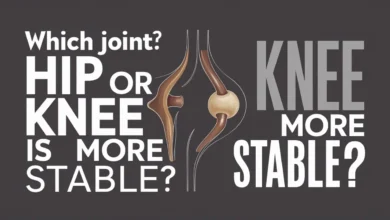
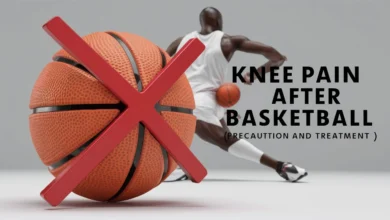

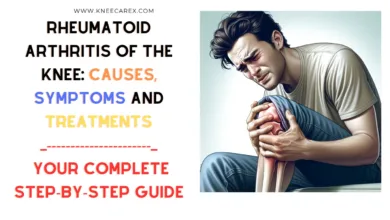
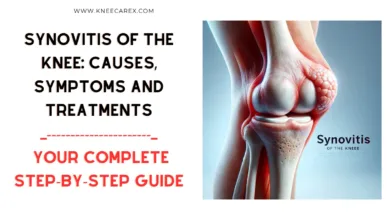
One Comment